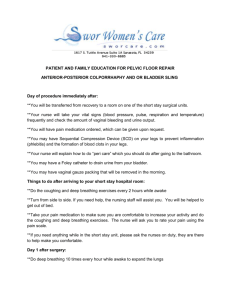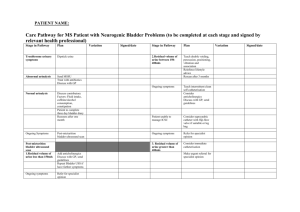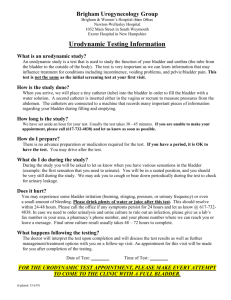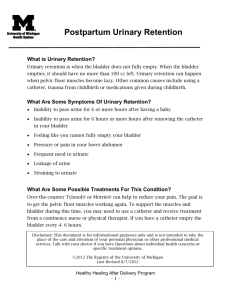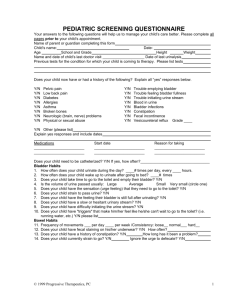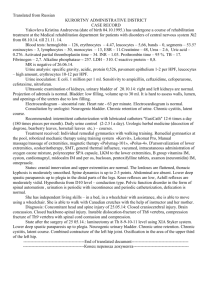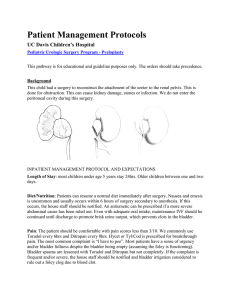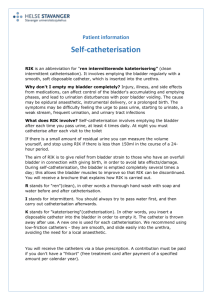Intravesical instillations treatment for Cystitis.
advertisement
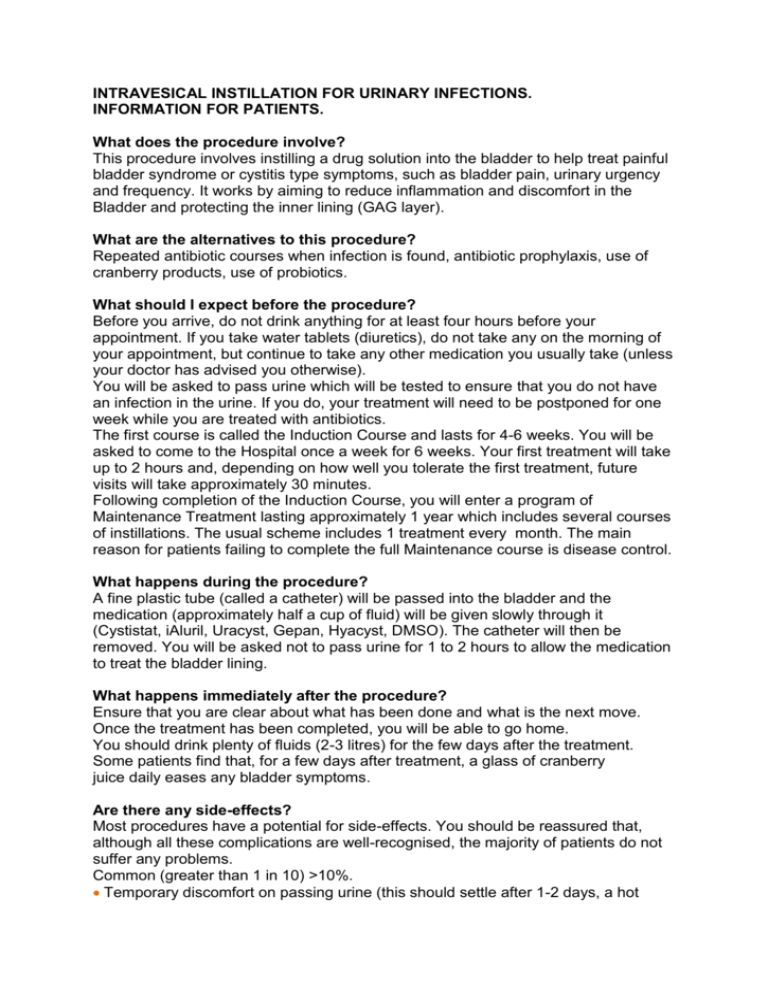
INTRAVESICAL INSTILLATION FOR URINARY INFECTIONS. INFORMATION FOR PATIENTS. What does the procedure involve? This procedure involves instilling a drug solution into the bladder to help treat painful bladder syndrome or cystitis type symptoms, such as bladder pain, urinary urgency and frequency. It works by aiming to reduce inflammation and discomfort in the Bladder and protecting the inner lining (GAG layer). What are the alternatives to this procedure? Repeated antibiotic courses when infection is found, antibiotic prophylaxis, use of cranberry products, use of probiotics. What should I expect before the procedure? Before you arrive, do not drink anything for at least four hours before your appointment. If you take water tablets (diuretics), do not take any on the morning of your appointment, but continue to take any other medication you usually take (unless your doctor has advised you otherwise). You will be asked to pass urine which will be tested to ensure that you do not have an infection in the urine. If you do, your treatment will need to be postponed for one week while you are treated with antibiotics. The first course is called the Induction Course and lasts for 4-6 weeks. You will be asked to come to the Hospital once a week for 6 weeks. Your first treatment will take up to 2 hours and, depending on how well you tolerate the first treatment, future visits will take approximately 30 minutes. Following completion of the Induction Course, you will enter a program of Maintenance Treatment lasting approximately 1 year which includes several courses of instillations. The usual scheme includes 1 treatment every month. The main reason for patients failing to complete the full Maintenance course is disease control. What happens during the procedure? A fine plastic tube (called a catheter) will be passed into the bladder and the medication (approximately half a cup of fluid) will be given slowly through it (Cystistat, iAluril, Uracyst, Gepan, Hyacyst, DMSO). The catheter will then be removed. You will be asked not to pass urine for 1 to 2 hours to allow the medication to treat the bladder lining. What happens immediately after the procedure? Ensure that you are clear about what has been done and what is the next move. Once the treatment has been completed, you will be able to go home. You should drink plenty of fluids (2-3 litres) for the few days after the treatment. Some patients find that, for a few days after treatment, a glass of cranberry juice daily eases any bladder symptoms. Are there any side-effects? Most procedures have a potential for side-effects. You should be reassured that, although all these complications are well-recognised, the majority of patients do not suffer any problems. Common (greater than 1 in 10) >10%. Temporary discomfort on passing urine (this should settle after 1-2 days, a hot water bottle or painkillers such as Paracetamol should help) Frequency or urgency Occasional (between 1 in 10 and 1 in 50) 2-10%. Nil Rare (less than 1 in 50) <2%. Nil Are there any other important points? If you think you have a urine infection or if you develop a high temperature with backache, it is important to contact your GP and get treatment with antibiotics. Make sure you have a follow up appointment. Mr J Clavijo MD, FEBU Consultant Urological Surgeon St Hugh's Hospital Peaks Lane. Grimsby. DN32 9RP Tel: 01472 251100 / 0800 250070 (Freephone) Fax: 01472 251130 Secretary: 07547403861 Email: michelle@privateurology.co.uk Web: www.privateurology.co.uk Adapted from BAUS. www.baus.org.uk
